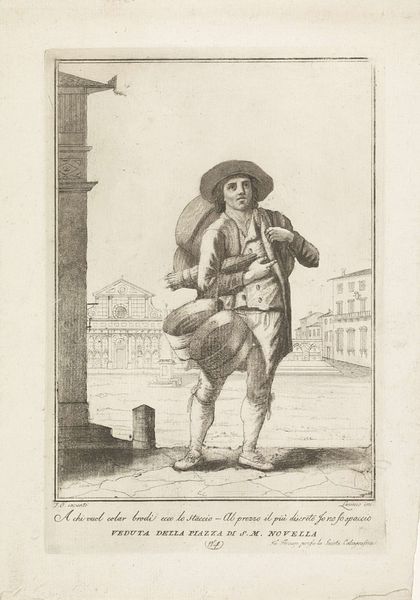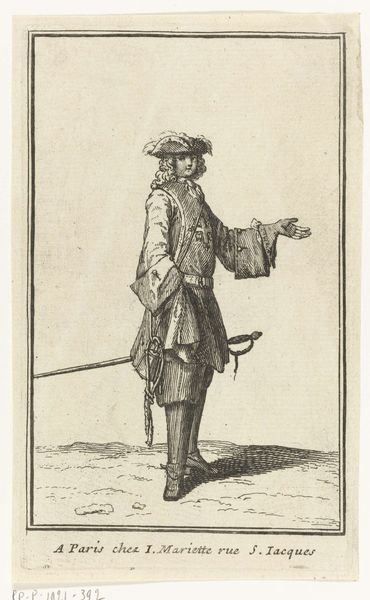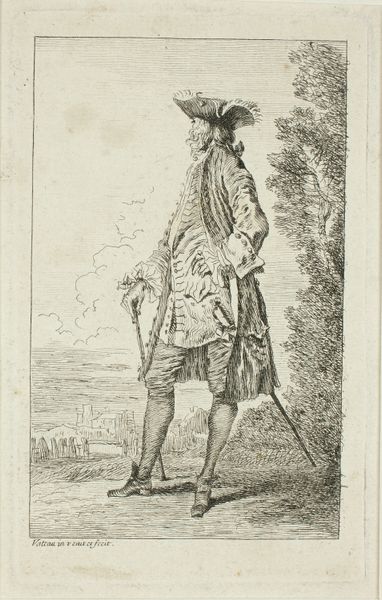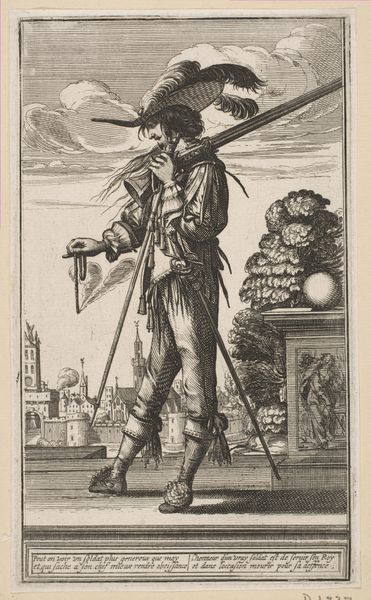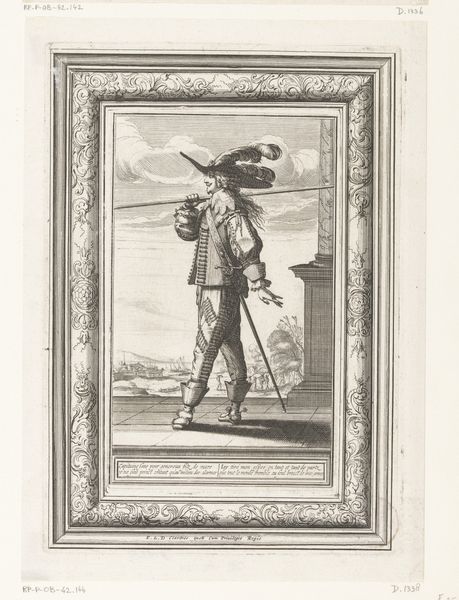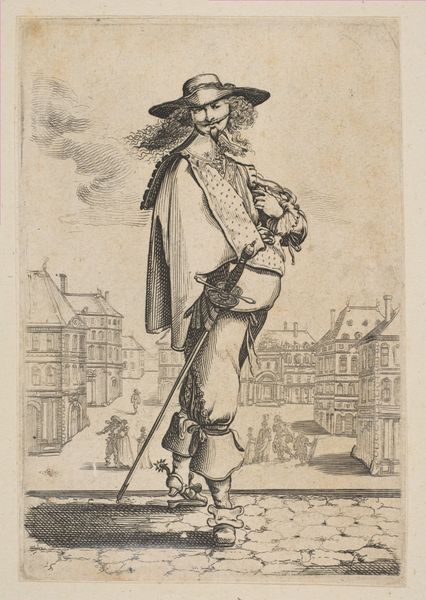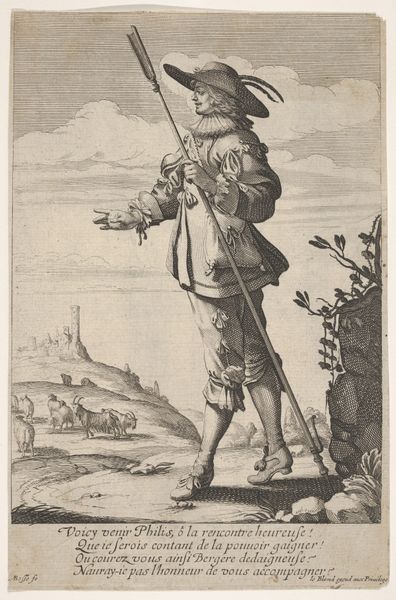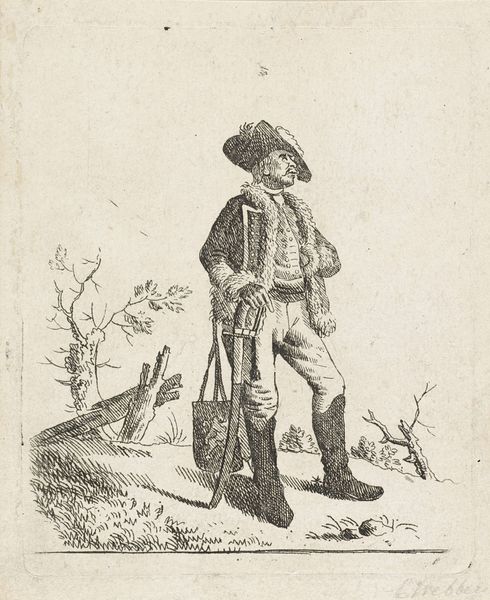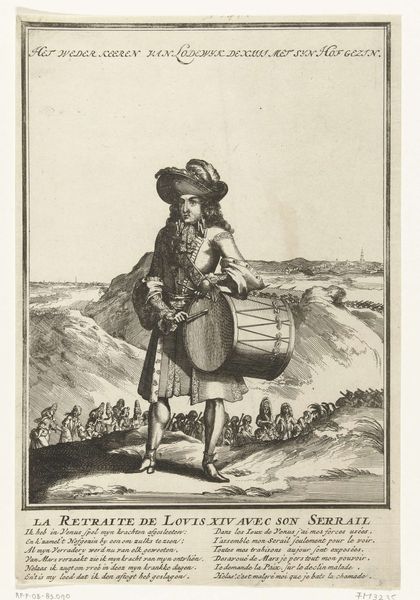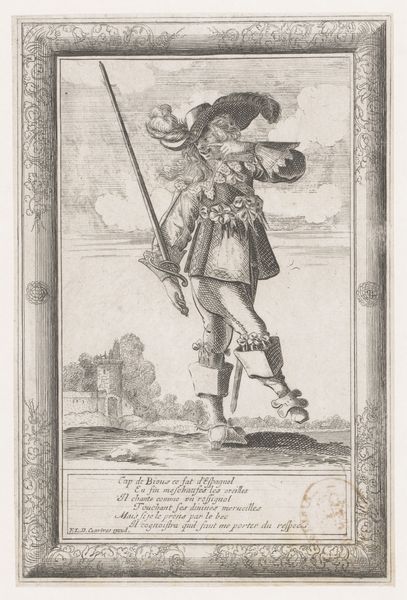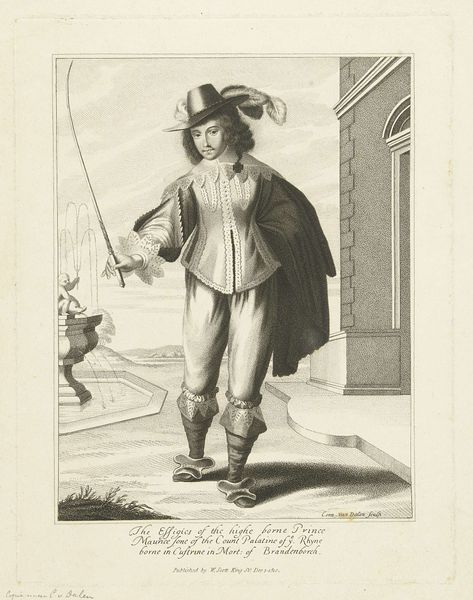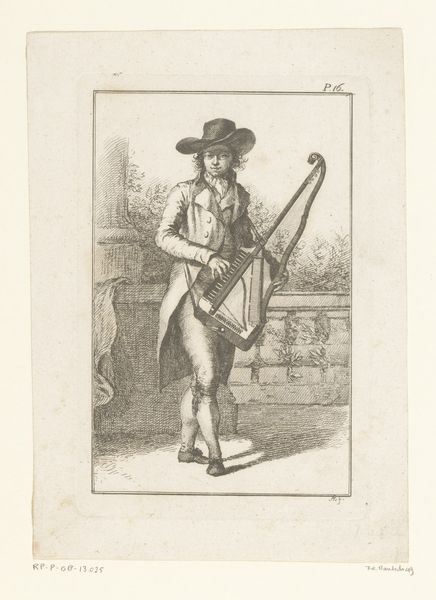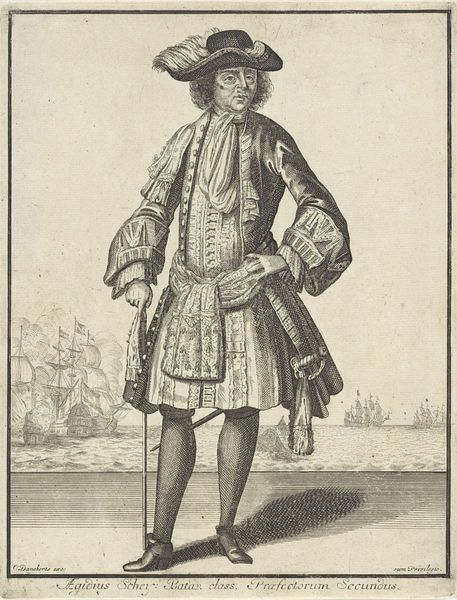
drawing, print, engraving
#
portrait
#
drawing
#
weapon
#
baroque
# print
#
soldier
#
line
#
history-painting
#
engraving
Dimensions: Sheet (trimmed): 9 5/16 × 6 5/16 in. (23.6 × 16 cm)
Copyright: Public Domain
Curator: Abraham Bosse’s 1632 engraving, “A Pikeman,” from the collection of the Metropolitan Museum of Art presents us with a curious character study. Editor: Curious indeed! There’s a playful daintiness that I immediately get from this soldier. He's carrying a massive spear, yet something about his expression… almost cheeky, and those feathered plumes! Is it just me, or does he seem entirely unconcerned about the realities of battle? Curator: Well, consider that Bosse, though he depicted military subjects often, was actually an artist and printmaker primarily concerned with social customs and the details of everyday life. The engraving technique itself is fascinating here; look at how those fine, cross-hatched lines define the volume of his puffed sleeves and breeches. Editor: Absolutely! That's what captures my eye. The engraving emphasizes line above all else. But to me, it really spotlights the tools and processes involved in creating this image. It’s reproducible and accessible! You get the feeling that the focus isn't about romanticizing military prowess, but on the *labor* – the detailed work needed to render this scene. I wonder how the availability of such prints impacted perceptions of military service at the time? Was it seen as more... commonplace, less glorified? Curator: Intriguing thought! He is also meticulously overdressed; this is about fashion, presentation, maybe aspiration to courtly fashion moreso than preparedness for war. Also note how much weight his left shoulder must bear and his swagger suggests nonchalance more than competence or battle fatigue. Editor: Yes! So, even the pose becomes another material element within the production of a "soldier". Every detail of how a soldier dresses, carries themself, or appears is work done to reinforce their profession, a social process if there ever was one! The etching needle translates labor from the battlefront to a controlled artisanal studio practice, in order to explore representations of class through garb and leisure time. I want to see other prints made by Abraham and reflect upon what daily scenes of this historical period become accessible through reproducibility and the power of mechanical arts to depict historical trends for common eyes and to common pockets. Curator: You’ve opened a whole new line of inquiry for me, thank you! Looking at "A Pikeman," then, isn't just viewing history but an exercise in contemplating historical perception. Editor: Right! Material changes cause us to reframe perceptions and, by exploring those differences, we get better acquainted with shifts between past and present.
Comments
No comments
Be the first to comment and join the conversation on the ultimate creative platform.
